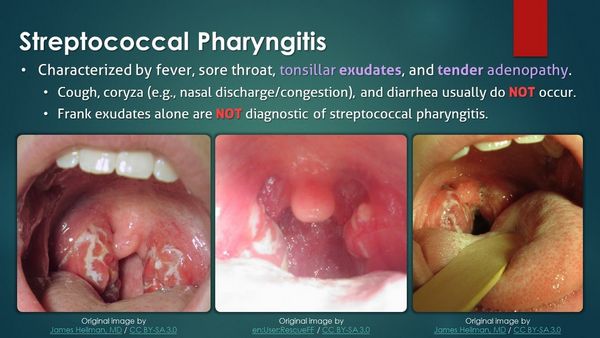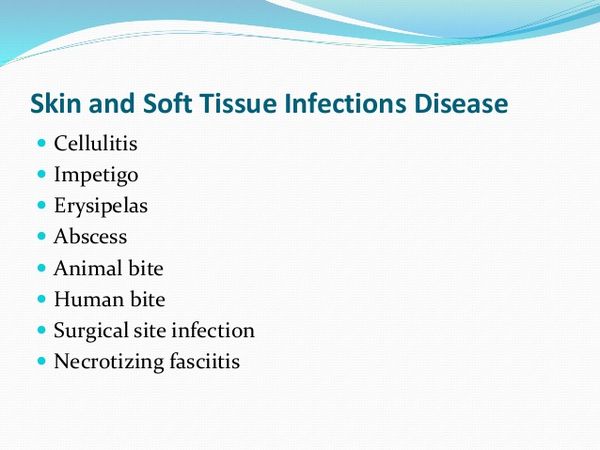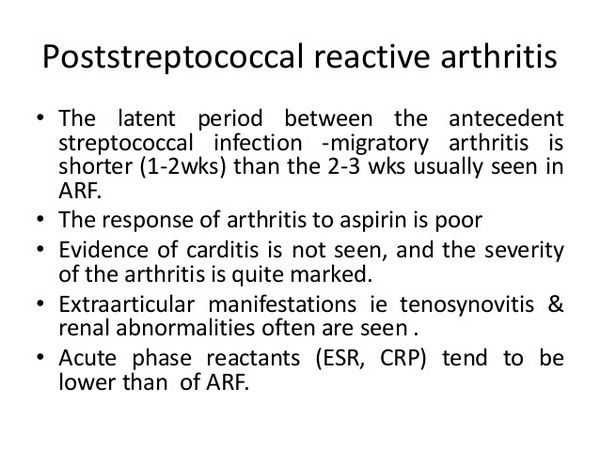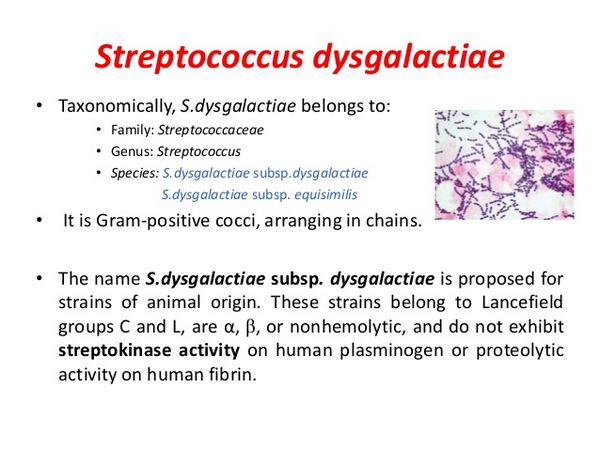PHARYNGITIS
The symptoms of pharyngitis caused by these organisms mimic those of S pyogenes pharyngitis (Box 50-1; see also site). Poststreptococcal glomerulonephritis has been described following S dysgalactiae subspp. equisimilis and S zooepidemicus pharyngitis.

Notably, however, no antistreptolysin O antibody response will be detected as these organisms do not produce streptolysin O. S dysgalactiae subspp. equisimilis pharyngitis has been associated with sterile reactive arthritis. Acute rheumatic fever, however, has not been described in association with S dysgalactiae subspp. equisimilis and S zooepidemicus pharyngitis.
SKIN & SOFT TISSUE INFECTIONS
Cellulitis, wound infections, pyoderma, erysipelas, impetigo, and cutaneous ulcers can be caused by these organisms (see site). Breaches in skin integrity may provide a portal of entry leading to bacteremia.

S dysgalactiae subspp. equisimilis and S zooepidemicus have been isolated in patients with cellulitis after vein harvest for coronary artery bypass grafting and in patients with conditions associated with abnormal venous or lymphatic drainage. Lymphangitis may accompany cellulitis. Bacteremia often occurs as a complication of skin and soft tissue infections.
ARTHRITIS
The skin is the presumed portal of entry in many patients (see site). Almost any joint may be involved and frequently the arthritis is polyarticular.

Prosthetic joint infection may occur. There have been isolated case reports of S dysgalactiae subspp. equisimilis and S zooepidemicus osteomyelitis.
OTHER INFECTIONS
S dysgalactiae subspp. equisimilis and S zooepidemicus may rarely cause pneumonia or sinusitis. Infective endocarditis caused by S dysgalactiae subspp. equisimilis and S zooepidemicus is uncommon. Patients may present acutely or subacutely. Destruction of valve leaflets, myocardial abscesses, conduction abnormalities, and severe congestive heart failure may be seen. Major systemic emboli to the spleen, kidneys, myocardium, and central nervous system may occur.

Rare reports of S dysgalactiae subspp. equisimilis and S zooepidemicus meningitis exist. These organisms have been associated with puerperal sepsis and endometritis.
Neonatal sepsis with S dysgalactiae subspp. equisimilis and S zooepidemicus occurs in premature or low birth weight infants and in the setting of premature rupture of the membranes. The onset of disease is typically within the first week of life.
Bacteremia may occur in S dysgalactiae subspp. equisimilis and S zooepidemicus infections. Other infections caused by S dysgalactiae subspp. equisimilis and S zooepidemicus include pericarditis, pyomyositis, brain abscess, epiglottitis, cervical lymphadenitis, intra-abdominal infection, subdural empyema, arterial-venous fistula infection, peritonitis in dialysis patients, panophthalmitis, and spinal epidural abscess. A toxic shocklike syndrome has also been reported.
Diagnosis
The diagnosis of S dysgalactiae subspp. equisimilis and S zooepidemicus infection is made by isolating these organisms from typically sterile sites.
Treatment
The antimicrobial agent of choice for S dysgalactiae subspp. equisimilis and S zooepidemicus is penicillin G. Other agents with good in vitro activity include cefazolin, vancomycin, the semisynthetic penicillins, and cefotaxime (Box 2). The addition of gentamicin to penicillin, cefotaxime, or vancomycin may result in a better outcome in cases of serious infection such as bacterial endocarditis caused by S dysgalactiae subspp. equisimilis and S zooepidemicus.




